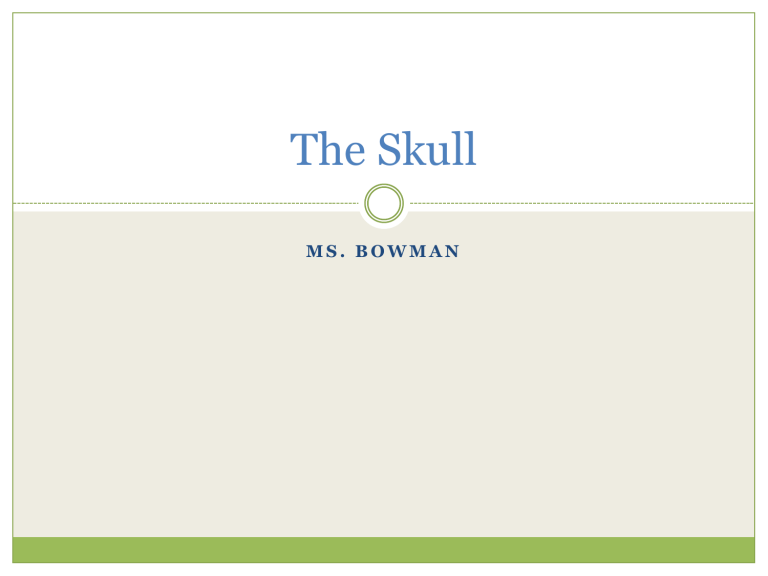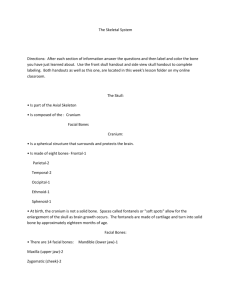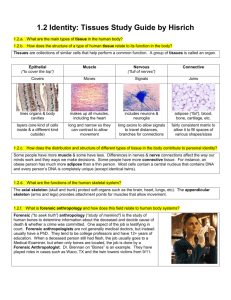Skull PowerPoint

The Skull
M S . B O W M A N
Axial Skeleton
80 bones
Three major regions
Skull
Vertebral Column
Thoracic Cage
Supports the head, neck, and trunk
Protects the brain, spinal cord and the organs of the thorax
The Skull
22 bones
Divided into the cranium and face
Most of the bones are flat with the exception of the mandible (jaw bone)
Cranium
Cranium-
Encloses and protects the brain
Provides attachment sites for head and neck muscles
There are 8 bones the make up the cranium
Frontal
Parietal (2)
Temporal (2)
Occipital
Sphenoid
Ethmoid
These bones are held together by interlocking joints called sutures.
They have a saw-toothed or serrated appearance.
Cranium
Face
Face-
Form the framework of the face
Contain cavities for the special sense organs of sight, taste, and smell
Provide openings for air and food passage
Secure the teeth
Anchor facial muscles
Face
Made up of 14 bones
Mandible-largest and strongest bone in the face
Maxilla (2)-all facial bones except mandible articulate with maxillae; considered keystone bones of face
Zygomatic (2)
Nasal (2)
Lacrimal (2)
Palatine (2)
Vomer
Inferior Nasal Conchae (2)
Hyoid Bone
Not really part of the skull
Lies inferior to mandible in anterior neck
Only bone that does not articulate directly with another bone
Anchored to temporal bones
Functions
Acts as a movable base for the tongue
Attachment points for neck muscles that raise and lower the larynx during swallowing and speech




